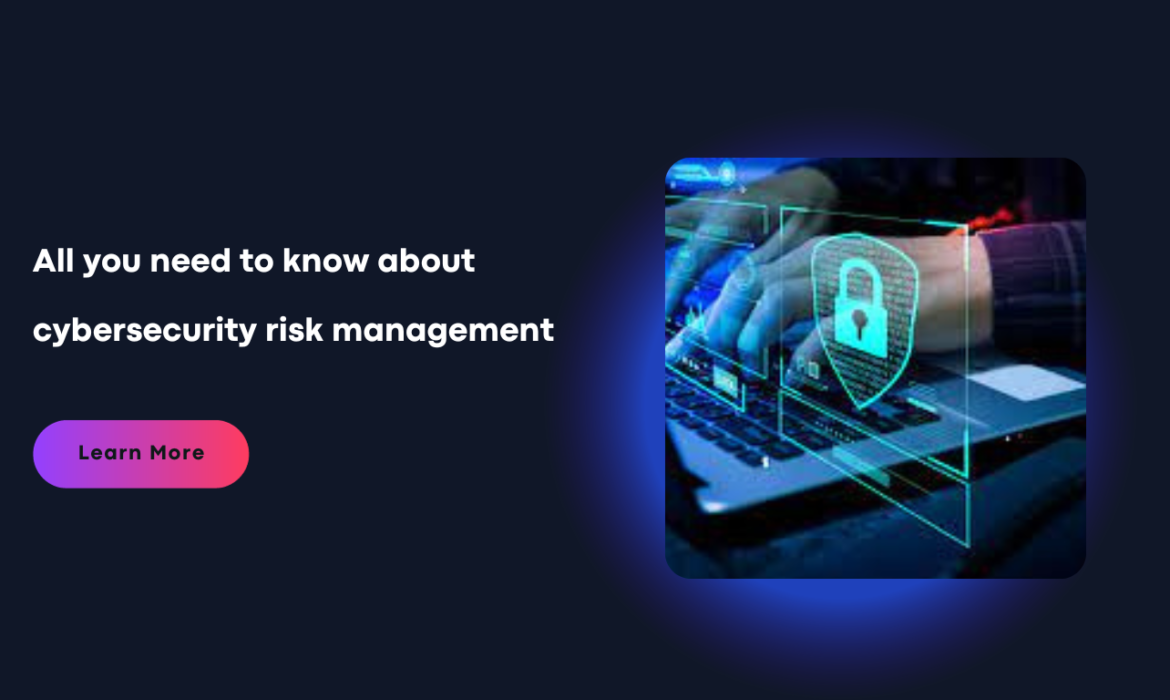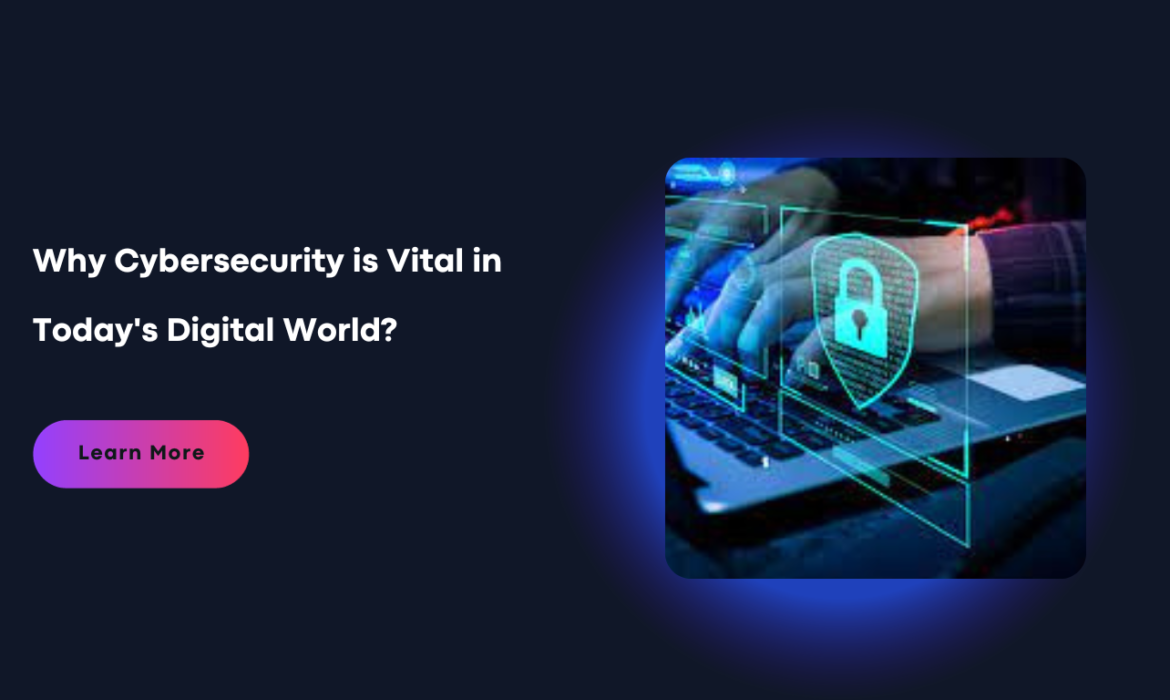All you need to know about Datto RMM
Datto RMM, or Datto Remote Monitoring and Management, is a comprehensive IT management and monitoring platform designed to help managed service providers (MSPs) and IT professionals efficiently oversee and maintain their clients’ IT infrastructure. It is part of the Datto family of products and services, which focuses on data protection, business continuity, and managed IT solutions. Here’s what you need to know about Datto RMM:
Remote Monitoring:
Datto RMM enables IT professionals to remotely monitor a wide range of devices, including servers, workstations, laptops, and network equipment. This monitoring encompasses various aspects of system health, such as hardware status, software updates, performance metrics, and security vulnerabilities.
Proactive Issue Detection:
The platform is designed to detect and alert IT teams to potential issues before they become critical problems. It provides real-time alerts and notifications, allowing technicians to address issues promptly, often before end-users even notice them.
Patch Management:
Datto RMM includes patch management capabilities that automate the process of applying software updates and security patches to devices. This helps keep systems up-to-date and secure, reducing the risk of vulnerabilities.
Automation and Scripting:
It offers automation features and scripting capabilities, allowing IT professionals to create custom scripts and automated workflows to streamline routine tasks and troubleshoot issues more efficiently.
Asset Management:
The platform provides tools for tracking and managing hardware and software assets across the network. This helps organizations maintain an accurate inventory, track license compliance, and plan for hardware upgrades.
Security and Compliance:
Datto RMM includes security features to help organizations protect their systems and data. This may include antivirus management, firewall configuration, and vulnerability scanning. Additionally, it can assist in maintaining compliance with regulatory requirements.
Remote Access and Support:
Technicians can use Datto RMM to remotely access and troubleshoot devices, providing remote support to end-users or resolving issues without the need for physical presence.
Reporting and Analytics:
The platform offers reporting and analytics tools that allow IT professionals to generate insights into system performance, uptime, and compliance. Customizable reports help in assessing the health and efficiency of the IT environment.
Integration:
Datto RMM is often designed to integrate seamlessly with other Datto products and third-party applications commonly used in IT environments. This integration enhances its capabilities and provides a holistic view of IT infrastructure.
Scalability: Datto RMM is scalable and can accommodate the needs of both small businesses and large enterprises. It allows IT professionals to manage multiple clients and their diverse IT ecosystems from a single centralized console.
User-Friendly Interface: The platform typically features an intuitive and user-friendly interface that makes it easy for IT teams to navigate, configure settings, and perform tasks efficiently.
Datto RMM is a valuable tool for MSPs and IT departments, offering a comprehensive set of features to monitor, manage, and secure IT environments effectively. It enables organizations to proactively address issues, reduce downtime, and deliver high-quality IT services to their clients or end-users.
All you need to know about cybersecurity risk management
In an age where the digital landscape is continuously expanding, so are the risks associated with it. Cyber threats have become more sophisticated and prevalent, posing substantial challenges to individuals and organizations alike. That’s where cybersecurity risk management comes into play. In this SEO-friendly blog post, we’ll delve into the world of cybersecurity risk management, why it’s essential, and how you can effectively navigate these digital waters to protect your assets.
Essence of Cybersecurity Risk Management
What is Risk Management?
It is the process of identifying, assessing, mitigating, and monitoring security risks in the digital realm. It involves a structured approach to safeguarding digital assets and sensitive information while ensuring the continuity of business operations.
Pervasive Cyber Threat Landscape
The digital world is fraught with threats, including data breaches, ransomware attacks, phishing scams, and more. The frequency and sophistication of these threats emphasize the critical need for cybersecurity risk management.
Why Cybersecurity Risk Management Matters
Protecting Valuable Assets
In today’s interconnected world, data is a valuable asset. It helps protect sensitive information, intellectual property, financial records, and customer data from falling into the wrong hands.
Regulatory Compliance
Numerous industries are subject to stringent data protection regulations. Effective risk management ensures that businesses comply with these regulations, avoiding legal repercussions and preserving their reputation.
Business Continuity
A successful cyberattack can disrupt business operations, causing downtime and financial losses. Effective risk management minimizes the risk of such disruptions, ensuring business continuity.
Benefits of Cybersecurity Risk Management
Threat Awareness
Cybersecurity risk management enhances an organization’s awareness of potential threats. This proactive approach allows for the timely identification and mitigation of risks.
Cost Savings
Investing in cybersecurity risk management can save a business significant costs associated with data breaches, legal fees, and downtime.
Reputation Protection
A strong cybersecurity posture enhances an organization’s reputation. Clients and customers are more likely to trust businesses that prioritize data security.
The Process of Cybersecurity Risk Management
Identification
The first step is risk management is identifying potential threats and vulnerabilities. This involves assessing the organization’s digital assets, network infrastructure, and existing security measures.
Assessment
Once threats are identified, they are assessed for their potential impact and likelihood of occurrence. This step prioritizes risks based on their severity.
Mitigation
After assessing risks, the organization implements measures to mitigate them. This may include installing firewalls, antivirus software, encryption, and employee training programs.
Monitoring and Response
It is an ongoing process. Organizations continuously monitor for threats and incidents, responding promptly when security breaches occur.
Finding the Right Cybersecurity Risk Management Partner
Expertise and Experience
Selecting the right risk management partner is crucial. Look for firms or professionals with expertise in the field, including certifications like CISSP (Certified Information Systems Security Professional) and CISM (Certified Information Security Manager).
Reputation and References
Research a potential partner’s reputation and ask for references. A reliable partner should have a history of successful engagements and satisfied clients.
Customized Solutions
Each organization is unique, and its cybersecurity needs vary. Ensure that your chosen partner offers customized solutions tailored to your specific risk profile.
Real-World Applications
Green Edge Computers
Green Edge Computers , a global financial institution, recognized the need for robust cybersecurity risk management after a near-miss data breach. They partnered with a cybersecurity firm to assess their vulnerabilities, implement stringent security measures, and establish an incident response plan.
Results
Thanks to their proactive approach to cybersecurity risk management, ABC Corporation successfully thwarted several attempted cyberattacks. They experienced minimal downtime and preserved their reputation, demonstrating the tangible benefits of effective risk management.
Conclusion
In today’s interconnected digital world, cybersecurity risk management is not an option; it’s a necessity. The risks are ever-present and ever-evolving, making it essential for individuals and organizations to navigate these waters wisely.
By understanding the fundamentals of risk management, the benefits it offers, and the importance of finding the right partner, you can safeguard your digital assets and thrive in the face of digital threats. Don’t wait for a cybersecurity incident to strike; invest in risk management today to fortify your digital defenses and secure your digital future.
Why Cybersecurity is Vital in Today’s Digital World?
In today’s hyper-connected world, where information flows freely and transactions happen online, the importance of cybersecurity cannot be overstated. From personal data to sensitive business information, every piece of data transmitted or stored on the internet is vulnerable to cyber threats. In this blog, we’ll explore why cybersecurity is crucial in safeguarding our digital lives and businesses, and why investing in it is a wise decision.
Protecting Personal Information
In an era of social media, online shopping, and digital banking, we share an unprecedented amount of personal information online. From our addresses and phone numbers to financial data and even our medical records, the internet holds a treasure trove of our private data. Cybersecurity measures, such as strong passwords, encryption, and multi-factor authentication, are essential to protect this sensitive information from falling into the wrong hands.
Safeguarding Financial Assets
Online banking and e-commerce have revolutionized the way we handle our finances. However, they have also created opportunities for cybercriminals to steal our money. Cyberattacks like phishing scams, ransomware, and identity theft can lead to significant financial losses. Implementing robust cybersecurity measures ensures that your financial assets remain secure and your transactions are safe from prying eyes.
Also Read: All you need to know about “Mimecast Log In”
Protecting Business Operations
For businesses, cybersecurity is not just an option; it’s a necessity. A cyberattack can cripple a company’s operations, disrupt its supply chain, and erode customer trust. Moreover, the financial ramifications of a data breach or cyberattack can be catastrophic. Investing in cybersecurity tools and training for employees is an investment in the longevity and success of your business.
Preserving Reputation and Trust
A data breach not only has immediate financial consequences but also damages a company’s reputation. Customers and clients lose trust in organizations that fail to protect their data. The long-term effects of a tarnished reputation can be even more devastating than the initial financial loss. Strong cybersecurity measures not only protect data but also preserve trust in your brand.
Complying with Regulations
As cyber threats continue to evolve, governments and regulatory bodies have imposed strict cybersecurity regulations to protect individuals and organizations. Failing to comply with these regulations can result in hefty fines and legal consequences. By prioritizing cybersecurity, you not only protect your data but also ensure that your business remains compliant with the law.
Also Read: Best Practices for IT Infrastructure Security Policies
Countering Evolving Threats
Cyber threats are constantly evolving, becoming more sophisticated and harder to detect. Hackers are continually finding new ways to exploit vulnerabilities. To stay ahead of these threats, organizations must invest in cybersecurity solutions that can adapt and evolve to counter emerging risks.
Ensuring Business Continuity
In the event of a cyberattack or data breach, the ability to quickly recover and resume operations is crucial. Cybersecurity measures, such as data backups and disaster recovery plans, are essential for ensuring business continuity. Without these safeguards, a cyber incident could lead to prolonged downtime and financial losses.
How Green Edge Computers can help?
We at Green Edge Computers have various cybersecurity solution for all kinds of businesses. You can choose the best fit for you.
End Point Security
Endpoint Protection
Sophos
Unified Endpoint Management
42Gears
SureMDM
SureFox
SureLock
Astro Contacts
Email Security
Spam Gateway
Mimecast
SpamTitan Gateway
Email Domain Protection
GoDMark
Video Kiosks
Network Security
Firewall
Sophos
Monitoring / Automation
Motadata
Data Security
Data Loss Prevention
Safetica Nxt
Safetica Data Discovery
Backup, Recovery + DR
Datto
Infrastructure Security
Privileged Access Management
Infrastructure Monitoring
Safetica One
Log Analytics Motadata
Service Desk Motadata
SSO – Pure ID
Conclusion
In conclusion, cybersecurity is not an option; it’s a fundamental requirement in our digital age. Whether you’re an individual protecting personal information or a business safeguarding sensitive data, the importance of cybersecurity cannot be overstated. Investing in robust cybersecurity measures is an investment in your safety, financial security, and the reputation of your brand. Don’t wait until it’s too late; prioritize cybersecurity today to protect what matters most. Contact us at Green Edge Computers to know more.
All you need to know about “Mimecast Log In”
Mimecast log in : Mimecast is a leading cybersecurity and email management company that provides cloud-based solutions to protect and manage email and other essential data. Mimecast offers various services to help organizations safeguard their email communications and data, and “Mimecast log in” refers to the process of logging into the Mimecast platform to access these services. Here’s everything you need to know about Mimecast login:
Mimecast log in Services:
Mimecast provides a range of services, including email security, archiving, continuity, and data protection. Users need to log in to access and manage these services.
Also Read: Best Practices for IT Infrastructure Security Policies
Mimecast User Account:
To log in to Mimecast, you must have a Mimecast user account. Typically, Mimecast services are used by organizations, so your IT department or Mimecast administrator will set up your account.
Mimecast Web Portal:
The primary way to access Mimecast services is through the Mimecast Web Portal, a secure online platform. To log in, you’ll need your username and password.
Mimecast Personal Portal:
Users can also access their Mimecast services and settings through the Mimecast Personal Portal, where they can configure their email security preferences, view quarantined messages, and more.
Also Read: Best Practices for IT Infrastructure Security Policies
Mimecast log in Mobile App:
Mimecast offers a mobile application for both Android and iOS devices, allowing users to access Mimecast services on the go. You can log in to the mobile app using your Mimecast credentials.
Logging In:
To log in to Mimecast, follow these general steps: a. Open your web browser and go to the Mimecast Web Portal or the Personal Portal URL. b. Enter your Mimecast username (usually your email address) and password. c. Complete any additional authentication steps if required, such as multi-factor authentication (MFA). d. Once authenticated, you’ll have access to your Mimecast services and settings.
Also Read: Interesting things you should know about cybersecurity analytics
Forgot Password:
If you forget your Mimecast password, you can typically use the “Forgot Password” or “Reset Password” link on the login page to reset it. You’ll receive instructions on how to create a new password.
Security:
Mimecast places a strong emphasis on security. They often implement multi-factor authentication to ensure that only authorized users can access their services.
Also Read: Enhancing Digital Safety With Effective Cybersecurity Solutions
Support:
Mimecast provides customer support to assist users with login issues, technical questions, and any other concerns related to their services.
Logging Out:
It’s essential to log out of your Mimecast session when you’re done to ensure the security of your account. Most Mimecast platforms have a “Log Out” option.
Remember that the specific steps and procedures for logging into Mimecast may vary depending on your organization’s configuration and security policies. If you encounter any issues or have questions about Mimecast login, it’s best to contact your organization’s IT department or Mimecast support for assistance.
Also Read: How to find the best cybersecurity consulting companies in Dubai?
Top benefits of using mimecast email cybersecurity
Mimecast is a well-regarded email cybersecurity and management solution provider, and using their services can offer numerous benefits for individuals and organizations looking to enhance their email security. Here are some of the top benefits of using Mimecast for email cybersecurity:
Threat Protection:
Mimecast provides robust protection against advanced email threats such as phishing attacks, ransomware, malware, and zero-day threats. Their solutions use advanced threat detection techniques to block malicious emails before they reach the inbox.
Spam Filtering:
Mimecast’s email security solutions include powerful spam filters that help reduce the clutter in your inbox and prevent unwanted emails from reaching you. This improves productivity and reduces the risk of falling for spam-related scams.
Also Read: How to Choose the Best Cybersecurity and Infrastructure Security Agency in Dubai?
Email Continuity:
Mimecast ensures that email communication remains uninterrupted even during server outages or downtime. It provides email continuity services, allowing users to access their emails from the Mimecast cloud in case of an email server failure.
Data Loss Prevention (DLP):
Mimecast offers DLP capabilities to prevent sensitive data from being leaked through email. It scans outgoing emails for sensitive content and can automatically block or encrypt messages containing confidential information.
Email Archiving:
Mimecast provides email archiving solutions that securely store emails and related data for compliance and e-discovery purposes. This ensures that organizations can easily retrieve and audit email communications when needed.
Centralized Management:
Mimecast offers a centralized management console that allows administrators to configure and monitor email security settings for the entire organization from one place, streamlining management tasks.
User Awareness Training:
Mimecast often includes security awareness training as part of its offerings. This educates users about the latest email security threats, phishing attacks, and best practices to avoid falling victim to cyberattacks.
Real-Time Reporting and Monitoring:
Mimecast provides real-time reporting and monitoring capabilities, allowing administrators to track email security incidents, view threat trends, and gain insights into the email traffic to make informed decisions.
Mobile Security:
Mimecast extends its security features to mobile devices, ensuring that emails accessed on smartphones and tablets are also protected against threats.
Scalability:
Mimecast’s solutions are scalable and can accommodate the needs of both small businesses and large enterprises. This scalability makes it a flexible choice for organizations of various sizes.
Compliance and Regulations:
Mimecast helps organizations meet compliance requirements, including those related to data protection and privacy regulations like GDPR and HIPAA, by providing features such as email archiving and data retention policies.
Phishing Simulation:
Mimecast often includes phishing simulation tools to help organizations train their employees to recognize phishing emails and respond appropriately.
Improved Productivity:
By reducing the time and effort spent dealing with spam, security threats, and email downtime, Mimecast helps improve overall productivity within an organization.
In today’s digital landscape, where email remains a primary communication tool and a common vector for cyberattacks, investing in robust email cybersecurity solutions like Mimecast can protect sensitive information, maintain business continuity, and enhance the overall security posture of an organization.





